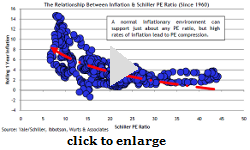Millions of investors and advisors rely on ratings from Standard & Poor’s, Moody’s and Fitch Ratings when purchasing bonds, bond funds, or annuities. And, for many years, they took the credibility of those credit rating agencies for granted.
But in a lawsuit filed this month, California’s $180 billion state employees pension fund, CalPERS, claims that the process of rating debt has become biased, and that it led CalPERS to invest $1.3 billion worth of retirement savings in highly-rated but deeply flawed Structured Investment Vehicles, or SIVs.
Specifically, the CalPERS suit assails the “issuer pay” model, where the agencies are paid by the issuers of the debt they rate, where in some cases they help structure the same debt packages they subsequently rate, and where at least part of their compensation is contingent, in effect, on delivering a rating that will ensure the successful sale of a security.
Exactly where this state-filed, non-class-action suit will lead is not yet clear. It’s very likely that there will be reforms, mainly in terms of disclosures and tougher oversight. Already, the rating agencies have promised to create stronger barriers between research and sales.
But the agencies don’t appear willing to abandon the issuer-pay model. That could leave their credibility in the area of complex structured investments still in question, and leave institutional and individual investors in a quandary. Martin D. Weiss, founder of Weiss Ratings (now owned by Street.com) and author of the 2009 best seller, “The Ultimate Depression Survival Guide,” told RIJ:
“Until there are structural reforms, and perhaps even radical reform, in the ratings industry, investors need to proceed with extra caution and not take the ratings at face value. Sure, the rating agencies will say, ‘We’ve fixed the problem.’ But they’ve said that before. The bottom line is, you can’t trust the ratings.”
Meanwhile, CalPERS membership, like much of California, is in financial pain. The pension fund, which covers 1.6 million workers, saw its assets drop in value from $237.1 billion in mid-2008 to only $180.9 billion as of last June 30, according to Pensions & Investments. The fund sank to $160 billion in March before rebounding.
Race to the bottom
In 2006, CalPERS invested about $1.3 billion in medium-term notes and commercial paper issued by Structured Investment Vehicles (SIVs) created by Cheyne Capital Management and Gordian Knot, two London-based firms, and Stanfield Capital Partners in New York. The ratings agencies had given all three SIVs their highest ratings for long-term debt, according to the complaint filed in the Superior Court of California, San Francisco County .
But, between August 2007 and February 2008, as the global financial crisis gained momentum, all three SIVs missed payments or sustained capital losses, and suffered an abrupt series of ratings downgrades. They eventually defaulted on their obligations to CalPERS, resulting in a loss CalPERs estimates “in hundreds of millions, and perhaps more than $1 billion.”
CalPERS now charges the three ratings agencies with “negligent misrepresentation” regarding the creditworthiness of the SIVs that issued the notes. But much of the complaint is devoted to an indictment of the issuer-pay system. That system, the suit says, put pressure on analysts to produce favorable outcomes for issuers—particularly for issuers of structured vehicles, who tended to pay much higher fees than issuers of plain-vanilla bonds.
The suit asserts that:
- “The ratings agencies, who were only paid by the issuer if a deal was rated, employed increasingly lax standards when they rated SIVs. They did so to ensure the SIVs could be successfully peddled to primarily institutional investors like CalPERS, thus permitting the ratings agencies to be paid their contingent fee.”
- “Competition between the rating agencies led to a market share war, which deteriorated into a ‘race to the bottom’ for standards of quality rating… In an internal S&P email, an employee laments that they had ‘lost a huge Mizuho RMBS deal to Moody’s due to a huge difference in the required credit support level.’”
- “After 2000, the ratings agencies became actively involved in the creation and ongoing operation of structured finance products like SIVs. Indeed, not only did they help structure the [Cheyne, Gordian Knot, and Stanfield Victoria] SIVs, but they were also actively involved in the creation of the structured finance assets held by SIVs, like RMBS [Residential Mortgage-Backed Securities] and CDOs [Collateralized Debt Obligations].” “The RAs were in effect, rating their own work,” the suit quoted a professor of financial institutions at Columbia University as saying.
- “Rating a typical SIV commanded $300,000 to $500,000 or more, and some fees for rating SIVs climbed to the $1 million level. Moreover, the SIV rating fee was on top of the fees the rating agency already generated by assigning ratings to the SIV’s underlying assets. What is more, the fees were contingent on the SIV ultimately being offered to investors.”
Free speech
The rating agencies have promised internal reforms, but they haven’t backed away from the issuer-pay model or suggested that the integrity of their analyses of SIVs or any other structured products was compromised by it.
S&P, in an April 10 white paper, blamed the structured finance losses on “natural actions” and “a tough economic environment.” “Much of the recent criticism directed at ratings firms stems from the natural actions that can occur as a firm reassesses, over time, ratings on existing securities,” the report said.
“Ratings are designed to change if any combination of factors including, for example, the overall state of the economy, and in the case of mortgage securities, the housing market, changes,” the report continued. “In a tough economic environment, companies and individuals alike can experience difficulties in meeting their obligations, and rating downgrades are often the result. This is in spite of the ratings firms’ best efforts to anticipate the severity of a downturn and account for it in the ratings.”
Stephen Joynt, Fitch’s CEO, told Congress on May 19 that “We believe that the manner in which we are paid and the nature of the securities we rate do not affect the essence of what we do or the free-speech rights we enjoy in connection with our work.”
The existing system already protects the public, he said. “Rating agencies are currently liable on the same basis as other market participants for securities fraud. They may not disregard red flags. Current law thus gives rating agencies strong reason to use reliable data without the negative consequences of overreaching liability.”
Immoral, not illegal
On July 20 The New York Times reported that famed attorney Floyd Abrams would defend S&P against various actions related to the financial crisis. He is expected to argue that S&P’s ratings are opinions protected by the right of free speech. One observer doubted that that strategy would work, however.
“I’m not sure how Fitch and S&P can defend on those grounds. They’d have to claim that the ratings were merely opinion and that CalPERS’ reliance on them was unreasonable,” said Robert Toth, an attorney at Giller & Calhoun in Fort Wayne, Indiana, who blogs about benefits law at businessofbenefits.com.
“Given the facts—that the underwriters were willing to pay such large sums for those “opinions,” and built their products around those opinions—the agencies will have difficulty claiming they did not know such things were happening,” he added.
Another observer said that the ratings agencies should have been more conservative, but guessed that they, like so many during the boom, didn’t want to miss out on the enormous sums that could be made.
“It’s now widely accepted in pension circles that the ratings agencies exercised some real latitude over the last few years, in the direction of being self-serving,” said a pension official from a state other than California who asked RIJ for anonymity. The official’s investment officer was criticized for choosing not to invest in the SIVs a few years ago, but is now a local hero.
“I don’t think [the rating agencies’ behavior] was fraudulent,” the official said. “The best analogy I can think of is the Enron case. In both instances, the investors were all just a bunch of sheep. Enron’s business model made no sense. But nobody questioned it because they enjoyed the returns. Nobody took responsibility for saying, ‘This doesn’t seem right.’ What went on was immoral, but not illegal.”
© 2009 RIJ Publishing. All rights reserved.





